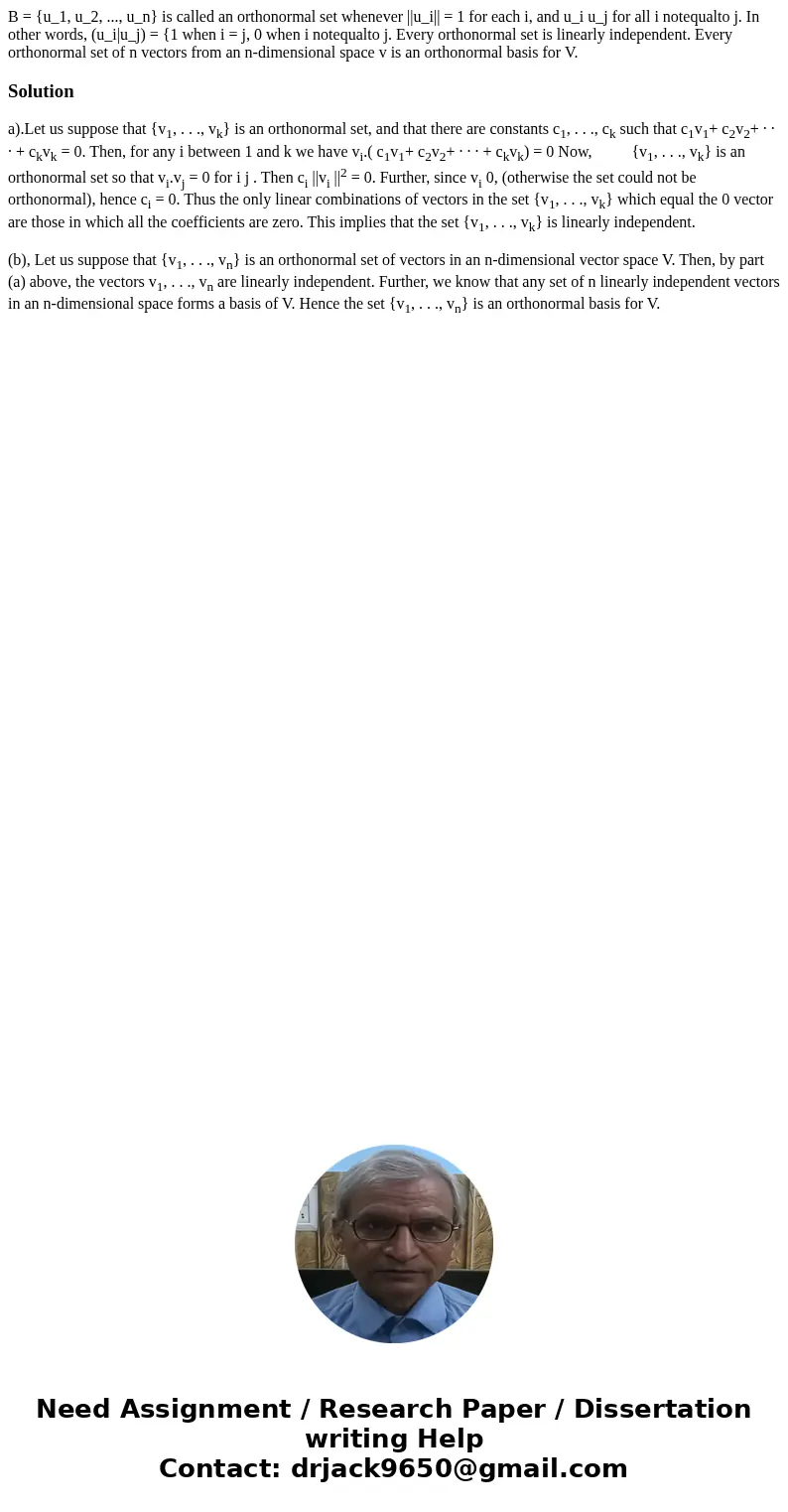B u1 u2 un is called an orthonormal set whenever ui 1 for
Solution
a).Let us suppose that {v1, . . ., vk} is an orthonormal set, and that there are constants c1, . . ., ck such that c1v1+ c2v2+ · · · + ckvk = 0. Then, for any i between 1 and k we have vi.( c1v1+ c2v2+ · · · + ckvk) = 0 Now, {v1, . . ., vk} is an orthonormal set so that vi.vj = 0 for i j . Then ci ||vi ||2 = 0. Further, since vi 0, (otherwise the set could not be orthonormal), hence ci = 0. Thus the only linear combinations of vectors in the set {v1, . . ., vk} which equal the 0 vector are those in which all the coefficients are zero. This implies that the set {v1, . . ., vk} is linearly independent.
(b), Let us suppose that {v1, . . ., vn} is an orthonormal set of vectors in an n-dimensional vector space V. Then, by part (a) above, the vectors v1, . . ., vn are linearly independent. Further, we know that any set of n linearly independent vectors in an n-dimensional space forms a basis of V. Hence the set {v1, . . ., vn} is an orthonormal basis for V.

 Homework Sourse
Homework Sourse